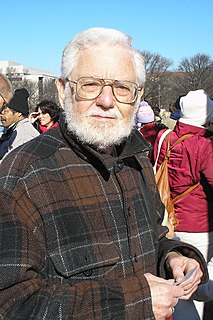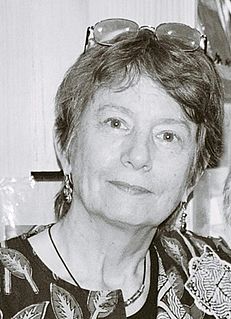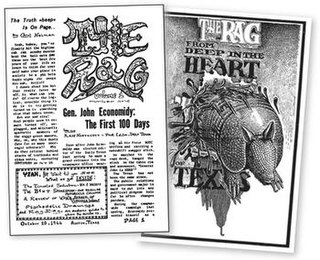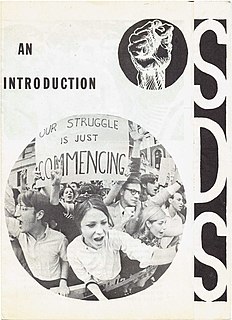
The Weather Underground was a radical left wing militant organization first active in 1969, founded on the Ann Arbor campus of the University of Michigan. Originally known as the Weathermen, the group was organized as a faction of Students for a Democratic Society (SDS) national leadership. Officially known as the Weather Underground Organization (WUO) beginning in 1970, the group's express political goal was to create a revolutionary party to overthrow American imperialism.

Fifth Estate (FE) is a U.S. periodical, based in Detroit, Michigan, begun in 1965, and presently with staff members across North America who connect via the Internet. Its editorial collective sometimes has divergent views on the topics the magazine addresses but generally shares an anarchist, anti-authoritarian outlook and a non-dogmatic, action-oriented approach to change. The title implies that the periodical is an alternative to the fourth estate.

A counterculture is a culture whose values and norms of behavior differ substantially from those of mainstream society, sometimes diametrically opposed to mainstream cultural mores. A countercultural movement expresses the ethos and aspirations of a specific population during a well-defined era. When oppositional forces reach critical mass, countercultures can trigger dramatic cultural changes. Prominent examples of countercultures in the Western world include the Levellers (1645–1650), Bohemianism (1850–1910), the Non-conformists of the 1930s, the more fragmentary counterculture of the Beat Generation (1944–1964), followed by the globalized counterculture of the 1960s (1964–1974), usually associated with the hippie subculture as well as the diversified punk subculture of the 1970s and 1980s.

The terms underground press or clandestine press refer to periodicals and publications that are produced without official approval, illegally or against the wishes of a dominant group. In specific recent Asian, American and Western European context, the term "underground press" has most frequently been employed to refer to the independently published and distributed underground papers associated with the counterculture of the late 1960s and early 1970s in India and Bangladesh in Asia, in the United States and Canada in North America, and the United Kingdom and other western nations. It can also refer to the newspapers produced independently in repressive regimes. In German occupied Europe, for example, a thriving underground press operated, usually in association with the Resistance. Other notable examples include the samizdat and bibuła, which operated in the Soviet Union and Poland respectively, during the Cold War.

William Henry Blum was an American author and critic of United States foreign policy. He lived in Washington, DC.
Liberation News Service (LNS) was a New Left, anti-war underground press news service which distributed news bulletins and photographs to dozens of subscribing underground, alternative and radical newspapers from 1967 to 1981.

The East Village Other was an American underground newspaper in New York City, issued biweekly during the 1960s. It was described by The New York Times as "a New York newspaper so countercultural that it made The Village Voice look like a church circular."

The Berkeley Barb was a weekly underground newspaper published in Berkeley, California, during the years 1965 to 1980. It was one of the first and most influential of the counterculture newspapers, covering such subjects as the anti-war movement and Civil Rights Movement, as well as the social changes advocated by youth culture.

Kaleidoscope was an underground newspaper that was published in Milwaukee, Wisconsin, USA]. Founded by John Kois, the radio disk jockey Bob Reitman and John Sahli, it was published from October 6, 1967, to November 11, 1971, printing 105 biweekly issues. The paper's first issue was printed with a borrowed $250 in an edition of 3,500 copies, which sold out in two days.

The counterculture of the 1960s was an anti-establishment cultural phenomenon that developed throughout much of the Western world between the mid-1960s and the mid-1970s. The aggregate movement gained momentum as the U.S. Civil Rights Movement continued to grow, and, with the expansion of the American Government's extensive military intervention in Vietnam, would later become revolutionary to some. As the 1960s progressed, widespread social tensions also developed concerning other issues, and tended to flow along generational lines regarding human sexuality, women's rights, traditional modes of authority, experimentation with psychoactive drugs, and differing interpretations of the American Dream. Many key movements related to these issues were born or advanced within the counterculture of the 1960s.

Cathlyn Platt Wilkerson, known as Cathy Wilkerson, is an American far-left radical who was a member of the 1970s radical group called the Weather Underground Organization (WUO). She came to the attention of the police when she was leaving the townhouse belonging to her father after it was destroyed by an explosion on March 6, 1970. Members of WUO had been constructing a nail bomb in the basement of the building, intending to use it in an attack on a non-commissioned officers dance at Fort Dix, New Jersey that night. Wilkerson, already free on bail for her involvement in the Chicago "Days of Rage" riots, avoided capture for 10 years. She surrendered in 1980 and pleaded guilty to unlawful possession of dynamite. She was sentenced to up to three years in prison and served 11 months.

The Rag was an underground newspaper published in Austin, Texas from 1966–1977. The weekly paper covered political and cultural topics that the conventional press ignored, such as the growing antiwar movement, the sexual revolution, gay liberation, and the drug culture. The Rag encouraged these political constituencies and countercultural communities to coalesce into a significant political force in Austin. As the sixth member of the Underground Press Syndicate and the first underground paper in the South, The Rag helped shape a flourishing national underground press. According to historian and publisher Paul Buhle, The Rag was "one of the first, the most long-lasting and most influential" of the Sixties underground papers. In his 1972 book, The Paper Revolutionaries, Laurence Leamer called The Rag "one of the few legendary undergrounds."

San Francisco Express Times was a counterculture tabloid underground newspaper edited by Marvin Garson and published weekly in San Francisco, California from January 24, 1968, to March 25, 1969, for a total of 62 issues, covering and promoting radical politics, rock music, arts and progressive culture in the Bay Area. It was a member of the Underground Press Syndicate, and sold for 15 cents.

Quicksilver Times was an antiwar, counterculture underground newspaper published in Washington, DC. Its first issue was dated June 16, 1969, with Terry Becker Jr., a former college newspaper editor and reporter for the Newhouse News Service, the main instigator in the founding group of antiwar activists. It ran for 3 years, with its final issue appearing in Aug. 1972. Publication was irregular and during the latter part of its run it was publishing once every 3 weeks. It was a member of the Liberation News Service and the Underground Press Syndicate. Quicksilver Times was one of several anti-government underground papers of the period now known to have been infiltrated by government informants.
Willamette Bridge was an underground newspaper published in Portland, Oregon from June 7, 1968 to June 24, 1971. In the spring of 1968, several groups of people in Portland were discussing starting an "underground" newspaper in Portland, similar to the Los Angeles Free Press or the Berkeley Barb. They were partially motivated by a frustration with the reporting in the mainstream press, which was still supporting the Vietnam war, opposing progressive movements like the United Farmworkers Union, and showed no understanding at all of the growing "Counterculture" and its music, dress and mores. On the other hand, they saw many things going on in the city that were positive, but isolated- Antiwar activity at Reed College, "Hippies" gathering around Lair Hill park, the progressive wing of the Democratic Party gathering strength, craft stores and head shops opening around town, local bands like The Great Pumpkin and The Portland Zoo giving concerts. A newspaper could bring these groups together and break the information monopoly of the daily papers.

Philadelphia Free Press was a 1960s era underground newspaper published biweekly in Philadelphia, Pennsylvania from 1968 to 1972. Originally launched at Temple University in May 1968 as the monthly Temple Free Press, it separated from Temple and became the Philadelphia Free Press in September 1968.

Hundred Flowers was an underground newspaper published in Minneapolis, Minnesota from April 17, 1970 to April 4, 1972. It was produced by a communal collective, with the main instigator being antiwar activist and former Smith College drama instructor Ed Felien. The 16-page, two-color tabloid was published weekly and cost 25 cents, circulating about 5000 copies.
The San Diego Free Press was an underground newspaper founded by philosophy students of Herbert Marcuse at the University of California, San Diego in November 1968, and published under that title biweekly until December 1969, when it became the weekly Street Journal starting with its 29th issue. The paper's contents were a mix of radical politics, alternative lifestyles, and the counterculture, reflecting in part Marcuse's Frankfurt School Marxist/Freudian ideas of cultural transformation.

Thorne Webb Dreyer is an American writer, editor, publisher, and political activist who played a major role in the 1960s-1970s counterculture, New Left, and underground press movements. Dreyer now lives in Austin, Texas, where he edits the progressive internet news magazine, The Rag Blog, hosts Rag Radio on KOOP 91.7-FM, and is a director of the New Journalism Project.

Students for a Democratic Society (SDS) was a national student activist organization in the United States during the 1960s, and was one of the principal representations of the New Left. Disdaining permanent leaders, hierarchical relationships and parliamentary procedure, the founders conceived of the organization as a broad exercise in "participatory democracy." From its launch in 1960 it grew rapidly in the course of the tumultuous decade with over 300 campus chapters and 30,000 supporters recorded nationwide by its last national convention in 1969. The organization splintered at that convention amidst rivalry between factions seeking to impose national leadership and direction, and disputing "revolutionary" positions on, among other issues, the Vietnam War and Black Power.

















